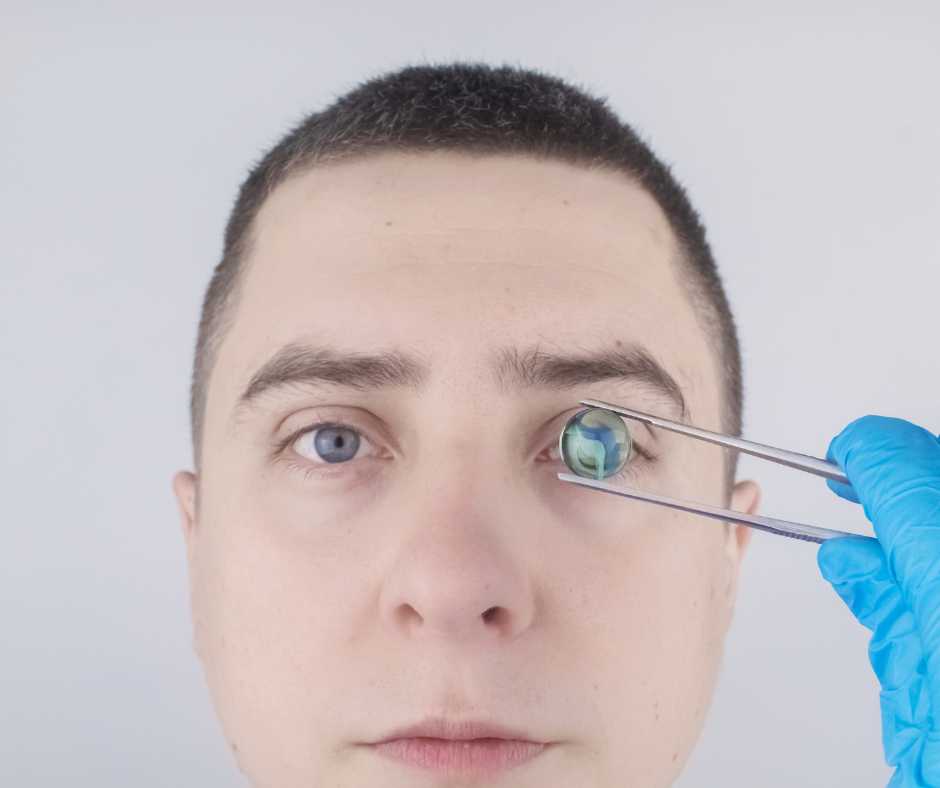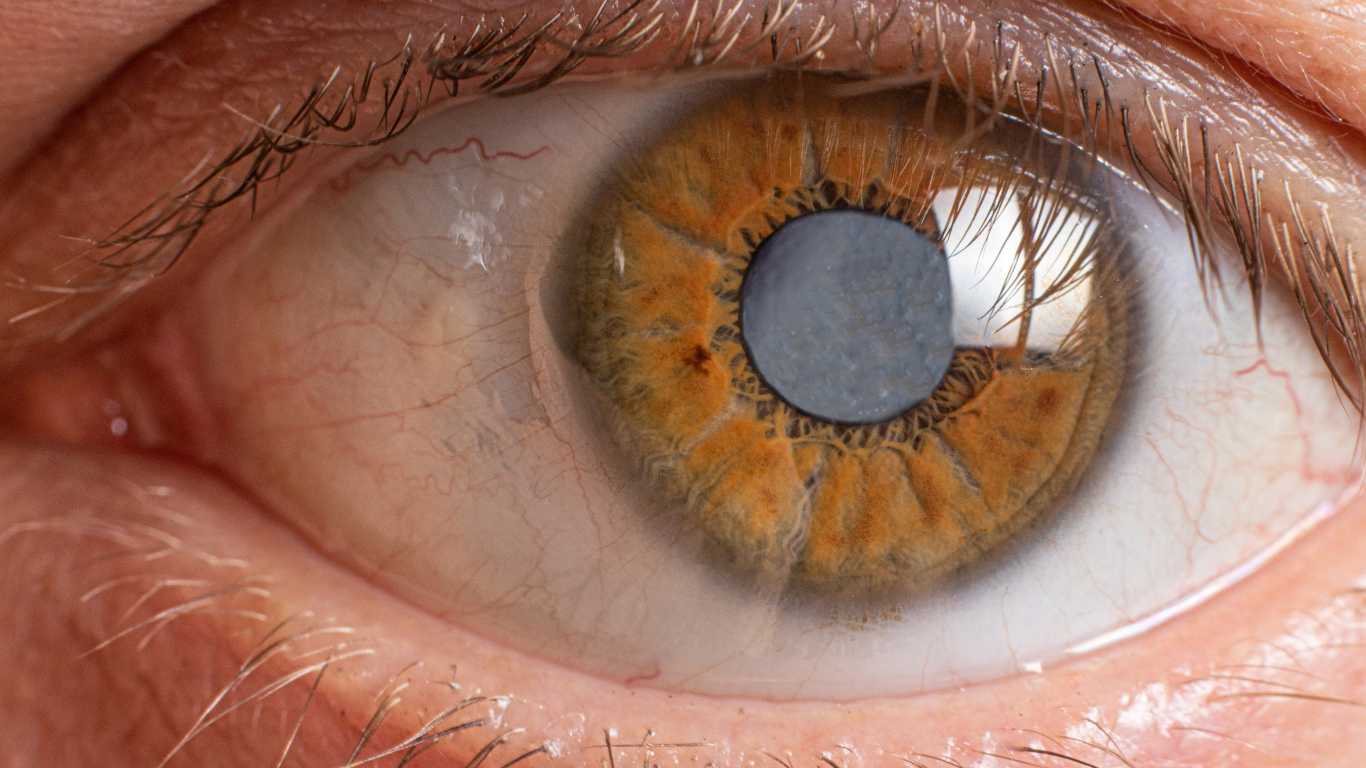Introduction:
Cataract Surgery Without Lens Implant Traditional cataract surgery involves removing the cloudy lens and replacing lens with an artificial lens implant. However, lens replacement may not be necessary or desirable in some situations of cataract surgery. In this blog post, we will explore the concept of cataract surgery without lens implant, discuss the reasons behind this lens implant approach, and delve into alternative replacement options for considering cataract surgery.
I. Understanding Cataracts and Traditional Lens Replacement:
A. What are cataracts and how do they affect vision?
Cataracts are a common eye condition they typically develop slowly and can affect one or both eyes. Cataracts can cause various symptoms, including:
- Blurred vision: Objects may appear fuzzy or indistinct.
- Increased sensitivity to light: Bright lights may cause glare or halo effects.
- Difficulty seeing at night: Vision may be impaired in low-light conditions.
- Colors appearing faded or yellowed: Colors may appear less vibrant or have a yellowish tinge.
- Frequent changes in eyeglass prescriptions: Vision may deteriorate, requiring frequent updates to corrective lenses.
B. Traditional cataract surgery: Lens replacement and benefits.
Cataract surgery is the most effective treatment for cataracts. Traditional cataract surgery involves removing the cloudy lens and replacing it with an artificial lens implant, called an intraocular lens (IOL), follows these steps:
- Anesthesia: Eye drops or a local anesthetic is administered to numb the eye.
- Incision: A small incision is made in the cornea, the clear front part of the eye.
- Lens removal: Using a technique called phacoemulsification, the surgeon breaks up the cloudy lens and removes it through the incision.
- IOL placement: The artificial lens is then inserted through the same incision and positioned inside the eye, replacing the natural lens.
- Incision closure: The incision is self-sealing or may require a few sutures, which are typically tiny and dissolvable.
- Recovery: Patients are usually discharged the same day and prescribed eye drops for post-operative care.
Traditional lens replacement during cataract surgery offers several benefits, including:
- Improved vision: By replacing the cloudy lens, cataract surgery can significantly enhance visual clarity and sharpness.
- Cataract surgery with the right IOL can correct vision issues, reducing the need for glasses or contact lenses.
- Long-term results: IOLs are designed to be a permanent solution, providing lasting vision improvement.
C. The importance of lens replacement in cataract surgery.
The replacement of the natural lens with an artificial lens is a crucial step in cataract surgery for several reasons:
- Restoration of clear vision: The clouded natural lens is the primary cause of vision impairment in cataract patients. Replacing it with a clear artificial lens allows light to properly focus on the retina, resulting in improved vision.
- Vision correction opportunities: The selection of the appropriate IOL can address pre-existing refractive errors such as nearsightedness, farsightedness, and astigmatism, potentially reducing the reliance on corrective eyewear.
- Stable and predictable outcomes: Lens replacement with an IOL has been extensively studied and refined over the years, leading to consistently favorable results and a high success rate in restoring vision.
Understanding cataracts and traditional lens replacement lays the groundwork for exploring cataract surgery without lens implantation and alternative options in the following sections.

II. Cataract Surgery Without Lens Implant:
- A. Situations where lens replacement may not be necessary:
While lens replacement with an artificial intraocular lens (IOL) is the standard approach in cataract surgery, there are specific situations where lens replacement may not be necessary or desirable. These situations include:
- High risk or complex cases: In some instances, such as advanced age or underlying health conditions, the risks associated with lens replacement surgery may outweigh the potential benefits.
- Limited visual demands: Some individuals have minimal visual demands and may not require the visual enhancements provided by an IOL. For example, older adults with significant comorbidities or those with severe cognitive impairments may not derive substantial benefits from an IOL.
- Patient preference: In certain cases, patients may express a preference for cataract surgery without lens implantation. This can be due to personal reasons, concerns about the risks associated with lens replacement, or a desire to explore alternative options.
- B. Procedure for cataract surgery without lens implant:
Cataract surgery without lens implantation typically involves the following steps:
- Phacoemulsification technique: Similar to traditional cataract surgery, the cloudy lens is removed using phacoemulsification. This technique involves using ultrasonic waves to break up the cataract and suction it out of the eye through a small incision.
- Lens removal and alternative options: Once the cloudy lens is removed, the surgeon assesses the visual needs of the patient and discusses alternative options. These options may include:
a. Contact lenses: Depending on the patient’s visual prescription and preferences, contact lenses can be used to correct vision after cataract removal. These can be soft contact lenses, rigid gas permeable (RGP) lenses, or specialty lenses like multifocal or toric lenses.
b. Glasses: For individuals with minimal visual demands, prescription glasses may provide sufficient vision correction after cataract surgery.
c. Monovision: Monovision is a technique where one eye is optimized for distance vision, while the other eye is corrected for near vision. - Recovery and visual outcomes: The recovery process for cataract surgery without lens implantation is generally similar to traditional cataract surgery. Patients may experience temporary fluctuations in vision as the eye adjusts. The visual outcomes will depend on the alternative vision correction method chosen, and patients should discuss realistic expectations with their eye care provider.
It is important to note that cataract surgery without lens implantation is not suitable for everyone. Consulting with an experienced ophthalmologist is crucial to determine the most appropriate approach to cataract surgery and lens replacement options.
In the next section, we will explore alternative lens replacement options for individuals considering cataract surgery.
Cataract surgery without lens implantation typically involves the following steps:
- Phacoemulsification technique: Similar to traditional cataract surgery, the cloudy lens is removed using phacoemulsification. This technique involves using ultrasonic waves to break up the cataract and suction it out of the eye through a small incision.
- Lens removal and alternative options: Once the cloudy lens is removed, the surgeon assesses the visual needs of the patient and discusses alternative options. These options may include:
a. Contact lenses: Depending on the patient’s visual prescription and preferences, contact lenses can be used to correct vision after cataract removal. These can be soft contact lenses, rigid gas permeable (RGP) lenses, or specialty lenses like multifocal or toric lenses.
b. Glasses: For individuals with minimal visual demands, prescription glasses may provide sufficient vision correction after cataract surgery.
c. Monovision: Monovision is a technique where one eye is optimized for distance vision, while the other eye is corrected for near vision. - Recovery and visual outcomes: The recovery process for cataract surgery without lens implantation is generally similar to traditional cataract surgery. Patients may experience temporary fluctuations in vision as the eye adjusts. The visual outcomes will depend on the alternative vision correction method chosen, and patients should discuss realistic expectations with their eye care provider.
It is important to note that cataract surgery without lens implantation is not suitable for everyone. Consulting with an experienced ophthalmologist is crucial to determine the most appropriate approach to cataract surgery and lens replacement options.
In the next section, we will explore alternative lens replacement options for individuals considering cataract surgery.
BOOK YOUR APPINTMENT NOW

III. Lens Replacement Options for Cataract Surgery:
A. Monofocal intraocular lenses (IOLs):
They provide vision correction at a single focal point, typically either distance or near vision. Here are the different types of monofocal IOLs:
- Standard monofocal IOLs: These lenses provide clear vision at a fixed distance, usually set for distance vision. Patients who choose standard monofocal IOLs may still require glasses for reading or other close-up activities.
- Monovision IOLs: Monovision is a technique where one eye is corrected for distance vision, and the other eye is corrected for near vision. While it can reduce the dependence on glasses, some individuals may experience a compromise in depth perception.
- Toric IOLs for astigmatism correction: Toric IOLs are designed to correct astigmatism, a common refractive error caused by an irregularly shaped cornea. These specialized IOLs can provide both cataract removal and astigmatism correction in one procedure, potentially reducing the need for glasses or contact lenses.
B. Multifocal and Accommodating IOLs:
Unlike monofocal IOLs, multifocal and accommodating IOLs offer vision correction at multiple distances, aiming to reduce or eliminate the need for glasses. These IOLs work by splitting incoming light into different focal points or by flexing within the eye to adjust focus. Here are the different types of multifocal and accommodating IOLs:
- Multifocal IOLs: Multifocal IOLs have multiple zones with varying focusing powers, allowing patients to see clearly at different distances. They can provide good distance, intermediate, and near vision, potentially reducing the reliance on glasses for various activities.
- Accommodating IOLs: Accommodating IOLs mimic the natural focusing ability of the eye’s crystalline lens. They can adjust their position or shape within the eye in response to changes in focus, providing clear vision at different distances.
C. Premium IOLs and considerations:
Premium IOLs refer to multifocal, accommodating, or toric IOLs that offer additional vision correction benefits beyond standard monofocal lenses.
- Visual needs and lifestyle: Understanding your visual requirements, such as your occupation, hobbies, and activities, will help determine the most suitable lens replacement option.
- Potential drawbacks: Premium IOLs may have a higher cost compared to standard monofocal IOLs and can have some limitations or side effects, such as increased halos or reduced contrast sensitivity.
- Pre-existing eye conditions: The presence of other eye conditions, such as macular degeneration or glaucoma, may impact the suitability of certain premium IOLs.
Consulting your ophthalmologist helps evaluate your needs and choose the best lens replacement for cataract surgery.
In the next section, we will discuss the consultation and decision-making process involved in cataract surgery and lens replacement selection.
IV. Consultation and Decision-Making Process:
A. Importance of consulting with an ophthalmologist:
Consulting with an experienced ophthalmologist is crucial in the decision-making process for cataract surgery without lens implantation. The ophthalmologist will assess your eye health, cataract severity, and discuss options based on your needs.
B. Understanding the patient’s visual needs and expectations:
During the consultation, the ophthalmologist will take the time to understand your visual needs and expectations. Factors to consider include:
- Visual demands: Discuss your daily activities, hobbies, and occupation to determine the level of visual correction required. For example, if you have a job that involves extensive reading or computer work, near vision correction may be a priority.
- Lifestyle considerations: Consider how important it is for you to be less dependent on glasses for activities such as driving, sports, or social interactions. This will help guide the selection of the most suitable lens replacement option.
- Personal preferences: Express any personal preferences or concerns you may have about lens replacement.
C. Factors to consider when deciding on lens replacement:
Several factors of lens replacement option for cataract surgery without lens implantation:
- Visual outcomes: Understand the potential visual outcomes and limitations of each alternative option.
- Long-term goals: Consider your long-term vision goals and how they align with the lens replacement options. Some individuals may prioritize clear distance vision, while others may value independence from glasses for near vision activities.
- Health and eye conditions: Any pre-existing eye conditions or general health issues that may affect the success or suitability.
- Financial considerations: Understand the costs involved in cataract surgery and the different lens replacement options. Some premium IOLs may have additional expenses not covered by insurance.
It is important to have a comprehensive discussion with your ophthalmologist, ask questions, and clarify any concerns you may have. Your ophthalmologist will provide professional guidance based on their expertise and your unique situation.
In the next section, we will explore post-surgery care and expected outcomes after cataract surgery without lens implantation.
V. Post-Surgery Care and Expected Outcomes:
A. Post-surgery care:
After undergoing cataract surgery without lens implantation, it is important to follow the post-operative care instructions provided by your ophthalmologist. Here are some common aspects of post-surgery care:
- Medications: Your ophthalmologist may prescribe eye drops to prevent infection and promote healing. Follow the recommended dosage and frequency as instructed.
- Eye protection: Use a protective eye shield or glasses provided by your ophthalmologist to prevent accidental injury and rubbing of the operated eye.
- Rest and recovery: Take it easy and avoid strenuous activities for a few days following the surgery. Resting helps the eye heal properly.
- Avoid rubbing the eye: It is crucial to avoid touching or rubbing the operated eye to prevent any damage to the surgical site.
- Follow-up appointments: Attend all scheduled follow-up appointments with your ophthalmologist for a comprehensive evaluation of your healing progress.
B. Expected outcomes:
The expected outcomes after cataract surgery without lens implantation can vary depending on the alternative vision correction option chosen. Here are some general expectations:
- Improved vision: Cataract surgery aims to remove the clouded lens, resulting in improved clarity and sharpness of vision. However, the degree of improvement may vary based on the chosen alternative vision correction method.
- Reduced dependence on glasses: Depending on the vision correction option selected, there may be a reduction in the need for glasses or contact lenses.
- Adjusting to alternative vision correction: It may take some time for your eyes to adjust to the alternative vision correction method chosen. This adjustment period can involve adapting to new contact lenses, getting accustomed to new glasses prescriptions, or adapting to monovision if applicable.
- Potential limitations: It is important to note that cataract surgery without lens implantation may not provide the same level of visual acuity and quality as traditional cataract surgery with an intraocular lens implant. Some individuals may experience limitations such as reduced contrast sensitivity, increased glare, or compromised depth perception depending on the chosen option.
C. Follow-up and further adjustments:
After cataract surgery without lens implantation, regular follow-ups with your ophthalmologist are crucial to monitor healing, assess visual acuity, address concerns, and optimize vision.
It is essential to communicate any changes in your vision, difficulties, or concerns to your ophthalmologist during the follow-up visits. Your ophthalmologist will work closely with you to ensure the best possible visual outcomes and address any post-surgery issues that may arise.
CALL NOW
Conclusion:
Cataract surgery without lens implantation can be a viable option for certain individuals, depending on their specific needs and circumstances. While traditional lens replacement is the standard approach, exploring alternatives and understanding the various lens replacement options available is crucial.Consulting an experienced ophthalmologist and considering visual demands, lifestyle, and preferences helps individuals choose the best lens replacement for cataract surgery, enhancing their vision and quality of life.
Author Details:
Dr. Sushruth Appajigowda holds a prominent position as a Cornea, Cataract, Glaucoma, and LASIK Surgeon in Bangalore. He serves as the chief Cataract and Refractive surgeon at Vijaya Nethralaya Eye Hospital, Nagarbhavi Bangalore. Renowned as one of the finest LASIK surgeons nationwide, he brings with him over 12+ years of experience across multiple LASIK platforms, including ZEISS, ALCON, SCHWIND, AMO, and Bausch and Lomb. Having successfully conducted over 5000 LASIK procedures, Dr. Sushruth holds the title of a Certified Refractive Surgeon and a Fellow of the All India Collegium Of Ophthalmology. Furthermore, he stands as a distinguished speaker at various National and International Forums, using his expertise to guide you in selecting the most suitable procedure based on your health requirements.

http://vijayanethralaya.com/link-in-bio/


